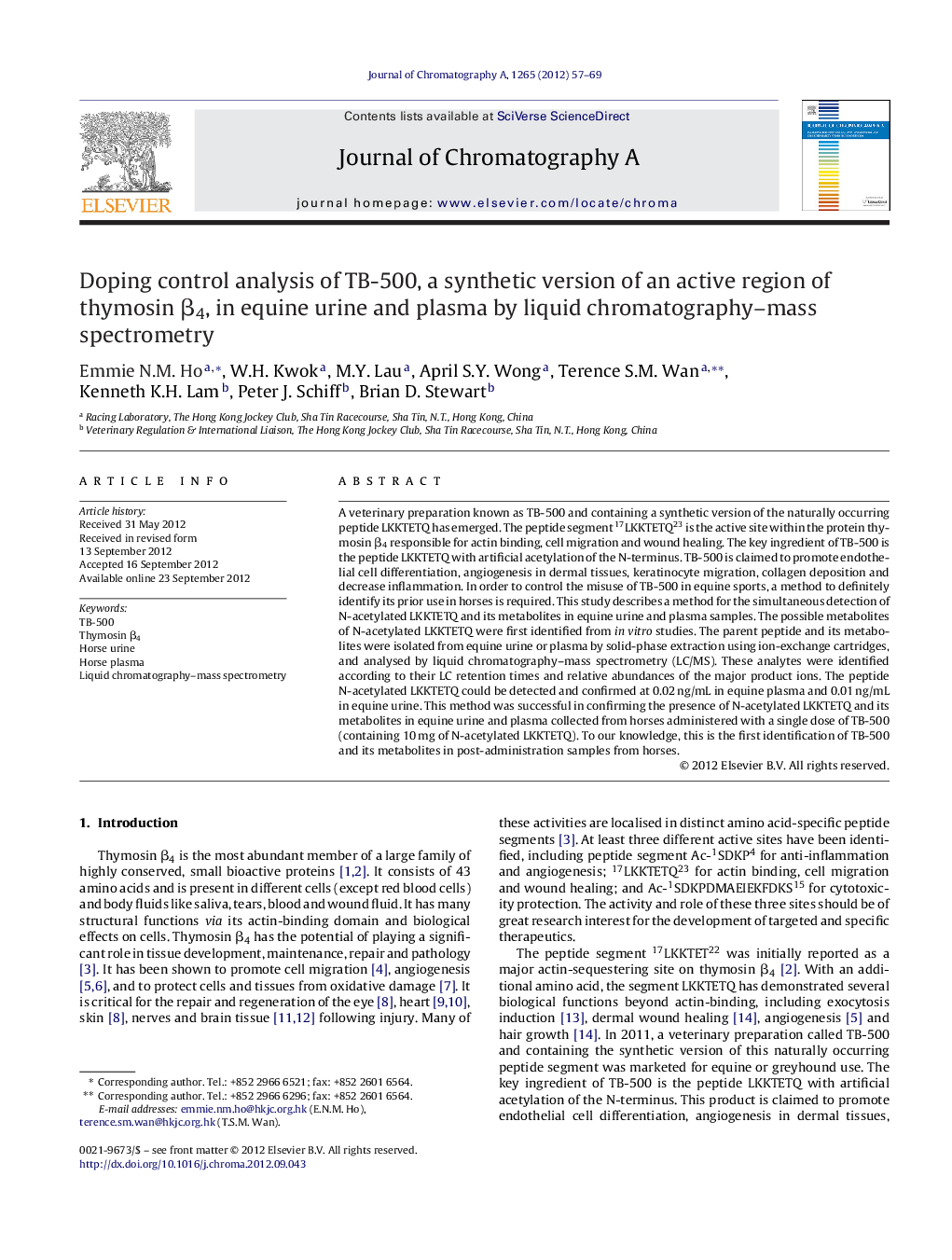| Article ID | Journal | Published Year | Pages | File Type |
|---|---|---|---|---|
| 1201858 | Journal of Chromatography A | 2012 | 13 Pages |
A veterinary preparation known as TB-500 and containing a synthetic version of the naturally occurring peptide LKKTETQ has emerged. The peptide segment 17LKKTETQ23 is the active site within the protein thymosin β4 responsible for actin binding, cell migration and wound healing. The key ingredient of TB-500 is the peptide LKKTETQ with artificial acetylation of the N-terminus. TB-500 is claimed to promote endothelial cell differentiation, angiogenesis in dermal tissues, keratinocyte migration, collagen deposition and decrease inflammation. In order to control the misuse of TB-500 in equine sports, a method to definitely identify its prior use in horses is required. This study describes a method for the simultaneous detection of N-acetylated LKKTETQ and its metabolites in equine urine and plasma samples. The possible metabolites of N-acetylated LKKTETQ were first identified from in vitro studies. The parent peptide and its metabolites were isolated from equine urine or plasma by solid-phase extraction using ion-exchange cartridges, and analysed by liquid chromatography–mass spectrometry (LC/MS). These analytes were identified according to their LC retention times and relative abundances of the major product ions. The peptide N-acetylated LKKTETQ could be detected and confirmed at 0.02 ng/mL in equine plasma and 0.01 ng/mL in equine urine. This method was successful in confirming the presence of N-acetylated LKKTETQ and its metabolites in equine urine and plasma collected from horses administered with a single dose of TB-500 (containing 10 mg of N-acetylated LKKTETQ). To our knowledge, this is the first identification of TB-500 and its metabolites in post-administration samples from horses.
► A veterinary preparation TB-500 (containing of N-acetylated LKKTETQ) has emerged. ► The amino acid sequence matching an active region (17LKKTETQ23) of the thymosin β4. ► Famous trainers experienced massive boosts in performance after its use on animals. ► First report of a method to control the misuse of TB-500 in horses. ► First identification of TB-500 and its metabolites in post-administration samples.
